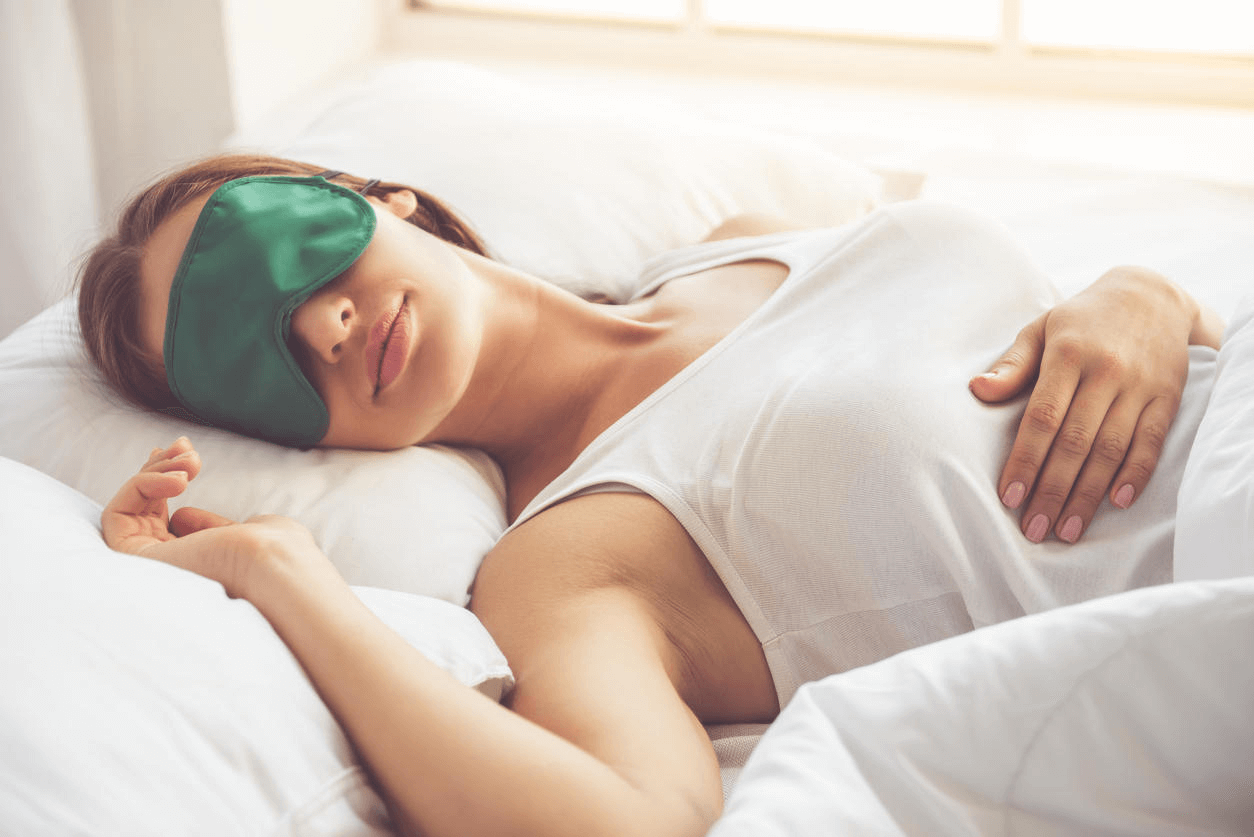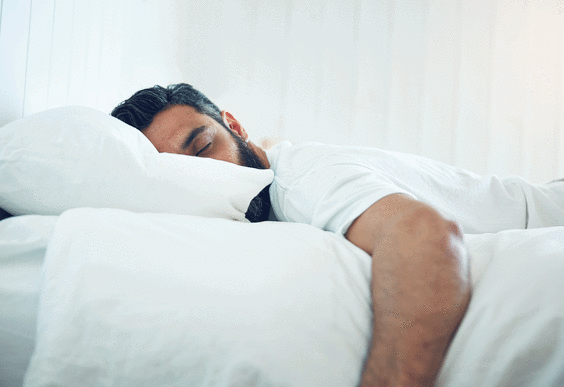
It's true that some causes of neck pain, such as age-related wear and tear, are not under your control. On the other hand, there are many things you can do to minimize your risk. One place to start is to look at how you sleep and what effect this may have on neck pain.
Sleeping with neck pain can be painful and frustrating. However, protecting your neck and keeping your sleep pain-free is possible!
Sleeping Do's and Don'ts for Neck Pain Relief
Sleep on your back.

Sleeping on your back will help to keep your neck aligned with your spine and give your entire body more support. It will also ensure your neck does not twist or lean to one side during the night.
In this position, there are minimal extra pressure areas as your weight is more evenly distributed across your bed. Plus, sleeping with your face turned up stops stomach acid from making its way up to your throat, known as acid reflux. This issue is something that side sleepers and stomach sleepers are prone to experiencing.
Note: If you snore, sleeping on your back can make your snoring worse. You may try sleeping on your side instead.
Sleep sideways.

Sleeping on one side is also a good option, especially if you find it more comfortable than sleeping on your back. A side sleeping position can also help your neck feel more supported, resting on 1 side on a pillow.
Side sleeping can lead to pressure building up. This pressure can cause inflammation, preventing the soft tissue from repairing and may even break down healthy cells during the night. These pressure points have a tendency to cause pain. This is especially true when it comes to the cervical portion of the spine. Typically, the best mattress for side sleepers is of medium firmness because it’s supportive enough to maintain healthy spinal alignment but soft enough to alleviate pressure points under major joints.
When a sleeper lays on their side, a gap forms between the head, neck, and the mattress. To rectify this problem, a pillow of appropriate height and firmness should be placed under the head and up against the shoulder. This pillow should allow the head to remain in a neutral position.
As long as the appropriate pillows are placed in the right areas, side sleeping endures as a good sleeping position.
For some individuals, the side position could be more healthy than back sleeping. These individuals are typically advised by a physician overseeing a condition such as pregnancy.
Notes:
- If your neck pain makes it difficult for you to turn your head to one side, sleep on the side of your body where your neck can turn or twist without pain.
- If you tend to also have lower back pain, sleeping on your side may be a good option as your spine can curve naturally while you sleep.
Avoid sleeping on your stomach, as this can strain your neck.

If you’re a stomach sleeper, the chances of having a crick in your neck are greatly increased. Mainly due to the turned head and the stressed spinal pose. Stomach sleeping is the least healthy sleeping position out of all the sleeping styles.
This sleep position can even limit blood flow, which can cause dizziness upon climbing out of bed. Talk about the effects of poor posture!
Note:
- You may need to place pillows on either side of your body to ensure you do not roll over onto your stomach.
- Avoid placing tennis balls in your clothing to keep your from turning onto your stomach or to stop snoring, as this can actually create more back pain.
Here are some additional tips:
- Try using a feather pillow, which easily conforms to the shape of the neck. Feather pillows will collapse over time, however, and should be replaced every year or so.
- Another option is a traditionally shaped pillow with "memory foam" that conforms to the contour of your head and neck. Some cervical pillows are also made with memory foam. Manufacturers of memory-foam pillows claim they help foster proper spinal alignment.
- Avoid using too high or stiff a pillow, which keeps the neck flexed overnight and can result in morning pain and stiffness.
- If you sleep on your side, keep your spine straight by using a pillow that is higher under your neck than your head.
- When you are riding in a plane, train, or car, or even just reclining to watch TV, a horseshoe-shaped pillow can support your neck and prevent your head from dropping to one side if you doze. If the pillow is too large behind the neck, however, it will force your head forward.

